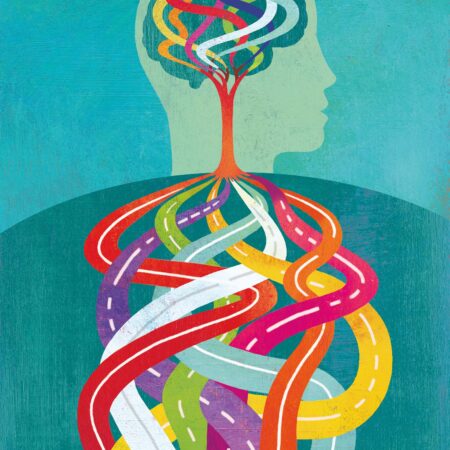Introduction
In a growing concern for public health officials, the National Health Service (NHS) has reported issuing over 1,000 prescriptions for children as young as 13 struggling with vaping addiction. This alarming trend highlights the increasing prevalence of e-cigarette use among adolescents, raising serious questions about the societal and health implications of vaping as a means of nicotine consumption.As schools grapple with the ramifications of this habit,parents and healthcare providers are left searching for effective solutions to a problem that appears to be spiraling out of control. This article delves into the factors contributing to the rise in vaping among youth, the NHSS response, and the broader implications of treating young addicts within a healthcare system already under strain.
impact of Vaping Addiction on Youth Health and Development
The rise of vaping among adolescents has triggered a widespread public health concern, with many young users developing a dependency on nicotine at an alarming rate. Health experts warn that nicotine addiction can lead to a multitude of issues, including impaired lung function, increased heart rate, and disruptions to brain development.the effects are particularly dire for individuals who are still undergoing crucial developmental phases, as nicotine exposure has been linked to cognitive impairments, emotional changes, and heightened anxiety levels. Moreover, with prescriptions being issued for vaping-addicted children as young as 13, the implications for long-term health are troubling, potentially setting the stage for lifelong addiction patterns.
The social ramifications are equally important, as youth who vape may experience isolation from peers who do not engage in this behavior, exacerbating feelings of anxiety and depression. Data highlights the following concerns regarding vaping addiction in youth:
- Increased likelihood of engaging in other risky behaviors
- Changes in academic performance due to distraction and decreased motivation
- Heightened risks of mood disorders and psychological distress
It is essential to cultivate awareness among parents and educators about the signs of vaping addiction, promoting early intervention and support systems to address this growing crisis.
Examining the Rise of Vaping Among Adolescents in the UK
The alarming trend of vaping among adolescents in the UK has reached new heights, prompting a significant response from health authorities. Reports indicate that the National Health Service (NHS) has issued over 1,000 prescriptions for vaping-related issues in children as young as 13.This surge in prescriptions highlights a growing concern about addiction, respiratory issues, and the long-term health impacts of e-cigarette use among teenagers. Health experts are particularly worried about the appeal of flavored e-liquids, which are often marketed to younger audiences, making it easier for them to experiment with vaping.
Several factors have contributed to the rise in vaping among adolescents, including:
- Accessibility: Vaping products are readily available in shops and online, often without age restrictions.
- Peer Influence: Many young people report that friends and social circles encourage experimentation with e-cigarettes.
- Misinformation: Some adolescents perceive vaping as a safer alternative to smoking traditional cigarettes.
To better understand this growing phenomenon, the table below outlines key statistics related to youth vaping in the UK:
| Year | Percentage of Vapers Aged 13-17 | Increase from Previous Year |
|---|---|---|
| 2020 | 5% | – |
| 2021 | 7% | +2% |
| 2022 | 10% | +3% |
| 2023 | 13% | +3% |
Prescribing Vaping as a Response: The Controversy Unpacked
The recent decision by the NHS to prescribe vaping as an intervention for children grappling with nicotine addiction has sparked heated discussions among health professionals, parents, and policymakers. Proponents argue that providing regulated vaping products may serve as a safer alternative to traditional cigarettes and help mitigate the health risks associated with nicotine withdrawal. Key points often highlighted include:
- Potential harm reduction compared to smoking
- Controlled dosages of nicotine
- Possibly reducing the stigma associated with seeking help for addiction
conversely, critics raise significant concerns about the implications of normalizing vaping among young individuals. The fear is that prescribing e-cigarettes could inadvertently signal that vaping is a socially acceptable behavior, potentially leading to increased usage among non-addicted youths.Critics emphasize:
- The long-term health impacts of vaping are still largely unknown
- It may perpetuate the cycle of nicotine addiction rather than resolve it
- Alternative cessation methods should be explored before resorting to vaping
Strategies for Prevention and Education in Schools
The alarming rise in vaping addictions among children as young as 13 highlights the urgent need for thorough prevention and education strategies in schools. To effectively address this growing concern,educational institutions must implement a framework that not only informs students about the dangers of vaping but also equips them with the tools necessary to resist peer pressure. key strategies include:
- Curriculum Integration: Incorporating lessons on the health risks associated with vaping into the existing health education curriculum.
- Peer-Led Initiatives: Encouraging students to lead discussions and workshops around the dangers of vaping,fostering a sense of ownership and duty.
- Parental Involvement: Organizing facts sessions for parents to educate them about vaping trends and signs of addiction in children.
In addition to educational programs, schools can create a supportive habitat that promotes healthy choices. This can involve establishing clear school policies regarding vaping, providing accessible counseling services, and leveraging community partnerships for resources and support. Schools might also consider implementing a monitoring system to track the effectiveness of their anti-vaping initiatives. This can be summarized in the following table:
| Strategy | Description |
|---|---|
| Awareness Campaigns | Engaging students through campaigns that highlight the risks of vaping. |
| Resources Access | Providing information on where to get help for those struggling with addiction. |
| Support Groups | Creating peer support groups for students to discuss challenges related to vaping. |
The Role of Healthcare Providers in Addressing Vaping Addiction
Healthcare providers play a crucial role in tackling vaping addiction among the youth,particularly as prescription rates for vaping-related interventions continue to rise.With more reports indicating that children as young as 13 are becoming addicted, healthcare professionals must adopt a proactive approach in identifying and supporting these young patients. This involves not only providing medical prescriptions but also offering comprehensive education and counseling. Key responsibilities include:
- Assessment: Evaluating the severity of addiction and understanding individual circumstances.
- Education: Informing patients and their families about the risks of vaping and the benefits of cessation.
- Customized Treatment Plans: Creating tailored intervention strategies that may include behavioral therapy and nicotine replacement options.
Moreover,collaboration with schools and community organizations can amplify the message and provide additional resources for combating this growing issue. A concerted effort is necessary to create an environment that discourages vaping among minors. To streamline this initiative, healthcare providers can utilize a framework of dialog and intervention strategies, such as:
| Strategy | Description |
|---|---|
| Community Outreach | Engaging local communities through workshops and informational sessions. |
| parental Guidance | Educating parents on warning signs and prevention methods. |
| Support Groups | Offering peer support for teens dealing with vaping addiction. |
Policy Recommendations to Protect Children from Vaping Risks
To effectively safeguard children from the risks associated with vaping, a multi-faceted approach is essential. First and foremost,educational programs should be integrated into school curricula,focusing on the dangers of vaping and nicotine addiction. These programs can equip students with the knowledge and critical thinking skills necessary to resist peer pressure.Additionally, parental workshops should be organized to raise awareness about the signs of vaping and provide strategies for open conversations with children about substance use.
Moreover, regulatory measures must be strengthened to limit youth access to vape products. This includes implementing stricter age verification processes and enhancing penalties for retailers who sell to minors. Health organizations should also advocate for the ban of flavored vaping products that appeal to younger audiences. A collaborative effort between schools, parents, and policymakers can create an environment that prioritizes children’s health and well-being. Below is a table highlighting potential policy interventions:
| Policy Intervention | Description |
|---|---|
| Age Restrictions | Enforce strict age verification to prevent sales to minors. |
| Flavor Ban | Prohibit flavored vape products that attract youth. |
| School Education | Implement mandatory vaping education in schools. |
| Parental Engagement | Host workshops for parents on identifying and discussing vaping risks. |
The Conclusion
the issuance of over 1,000 prescriptions for vaping-addicted children as young as 13 highlights a growing public health crisis that warrants immediate attention from healthcare professionals, educators, and policymakers alike. As vaping continues to captivate the teenage demographic, the potential long-term health implications and the normalization of nicotine dependency pose significant challenges for future generations. This development underscores the necessity for comprehensive strategies that encompass education,prevention,and intervention to address the underlying factors contributing to youth vaping. Moving forward, a collaborative effort among stakeholders is essential to safeguard the well-being of young people and to ensure that effective resources and support systems are in place. The health of our children depends on the actions we take today in addressing this pressing issue.







